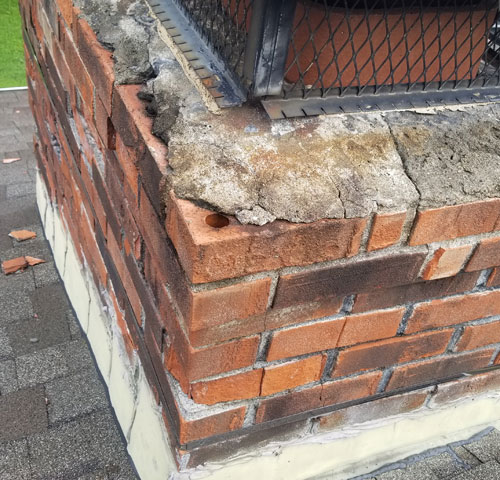What You Need to Know About Chimney Cracks
Cracks in your chimney’s masonry are early signs that tell you it’s time to have your chimney looked at and repaired. Ignoring these signs can lead to more extensive cracking, water damage, and a chimney that’s no longer safe to use or live around.
How do cracks in chimneys happen?
 Once a chimney passes a certain age, cracking within its bricks and mortar is just about inevitable. But even “newer” chimneys can become damaged by various events and circumstances. Here are some of them.
Once a chimney passes a certain age, cracking within its bricks and mortar is just about inevitable. But even “newer” chimneys can become damaged by various events and circumstances. Here are some of them.
Earthquakes and lightning strikes
Poor-quality materials used in the construction of the chimney
Violent hail storms
An improperly built chimney footing
Interior masonry damage from chimney fires and/or acidic decay from creosote and combustion gases
Gale-force winds
Season after season of intensely hot and cold air temperatures
You can’t prevent any of these causes of cracking in chimneys: the weather will do what the weather will do, and you can’t go back and do a better job in constructing your chimney. Fortunately, cracks in your chimney can be addressed in a way that prevents further damage.
Addressing chimney masonry cracks
The first step in evaluating the condition of your chimney after you’ve noticed cracked areas within the masonry is a professional chimney inspection. Chimney inspectors can look closely at the cracks and the rest of the chimney structure to determine why the damage happened, the exact location of the damage, and the extent of the damage.
Your inspector will then be able to recommend the best action to solve the problem. This action may cover a range of chimney repairs from basic to extensive. Examples include:
Chimney waterproofing: When cracking is minor, a waterproof sealant may be all that’s necessary to keep water from getting into the cracks and causing more damage.
Brick replacement: Bricks that are cracked or loose (spalling) can compromise the chimney structure. Chimney repair technicians can replace damaged bricks anywhere within the masonry.
Tuckpointing: This is a process where crumbling areas of mortar are scraped out and replaced with a strong new compound that will add years of life to your chimney.
Partial chimney rebuilding: If there are severe cracking and decay throughout much of the chimney stack (the part of the chimney above the roofline), your repair technician may recommend a stack rebuild.
Total chimney rebuilding: In cases where chimney cracks have been ignored for a length of time and severe structural damage as occurred throughout the chimney, the safest and the best option may be a total chimney rebuild from the ground up.
Be aware of these water leak and chimney damage signs
 Spotting problems with your chimney early will allow you to get an expert out to your home to solve the problem before serious damage occurs. Watch for these signs:
Spotting problems with your chimney early will allow you to get an expert out to your home to solve the problem before serious damage occurs. Watch for these signs:
Water in the firebox
Damp patches on the ceiling and walls near the chimney
White staining (efflorescence) on the exterior masonry
The crumbling mortar around the chimney on the roof or in the fireplace
A rusty/squeaky fireplace damper
Musty odors coming from the fireplace
If you notice any of these, bring in a professional for an inspection.
Chimney Specialists of Highland, WI, can help with any level of chimney cracking or other damage to your chimney or its components. Learn more about our services or schedule an appointment by calling (608) 929-4887.
If you live in the Dubuque, Iowa, area, call Dubuque Fireplace & Patio at (563) 582-5156.














